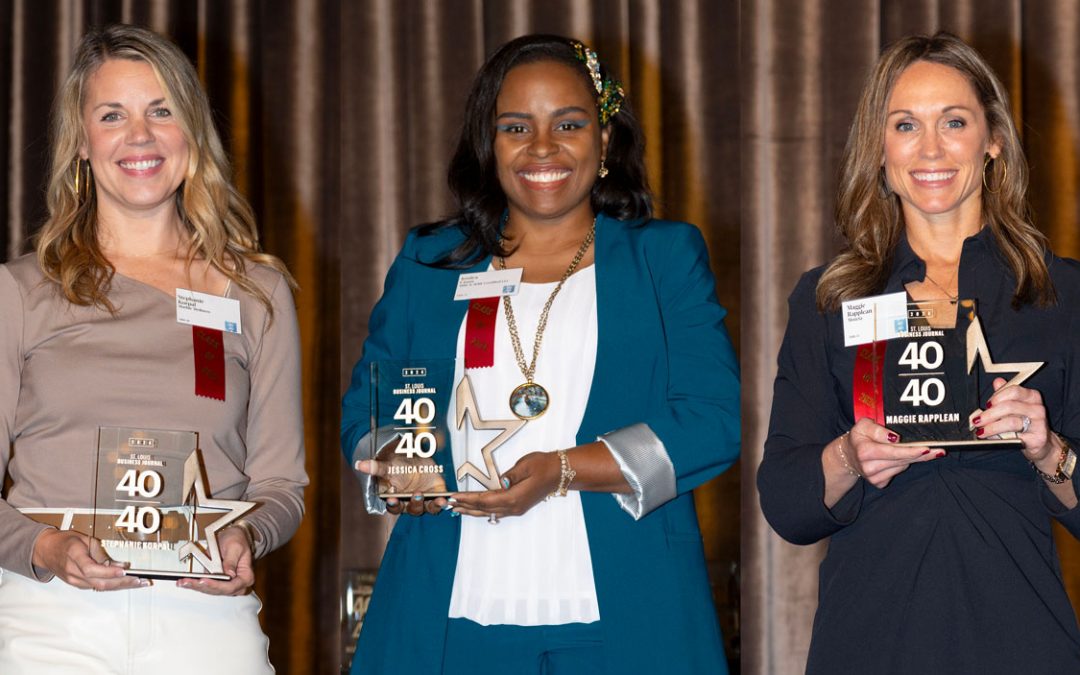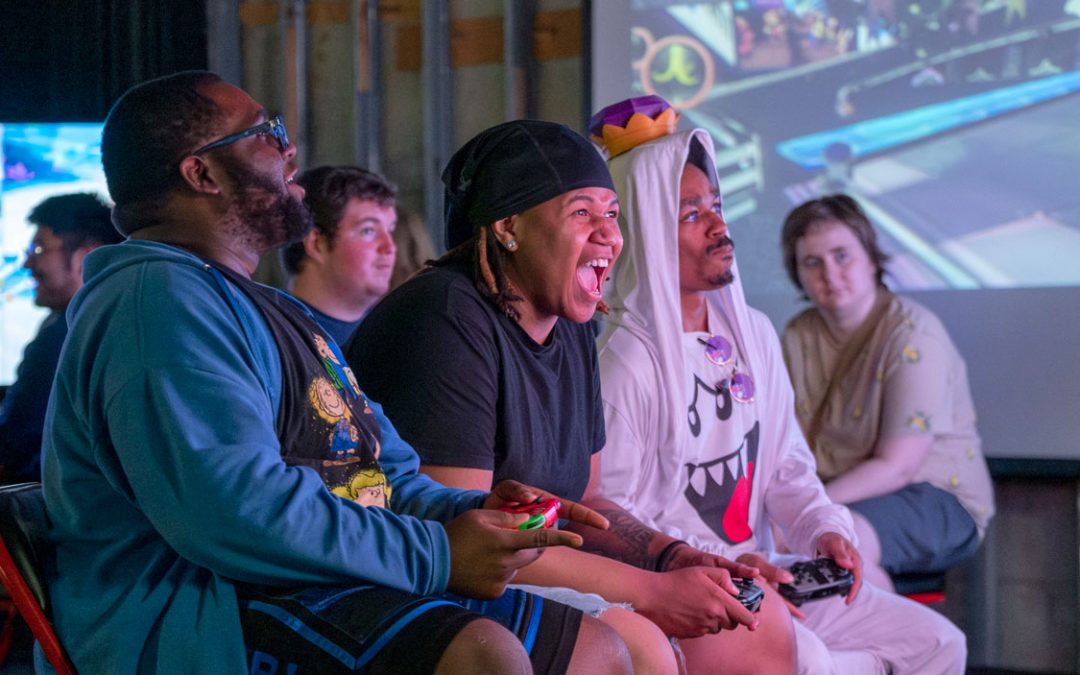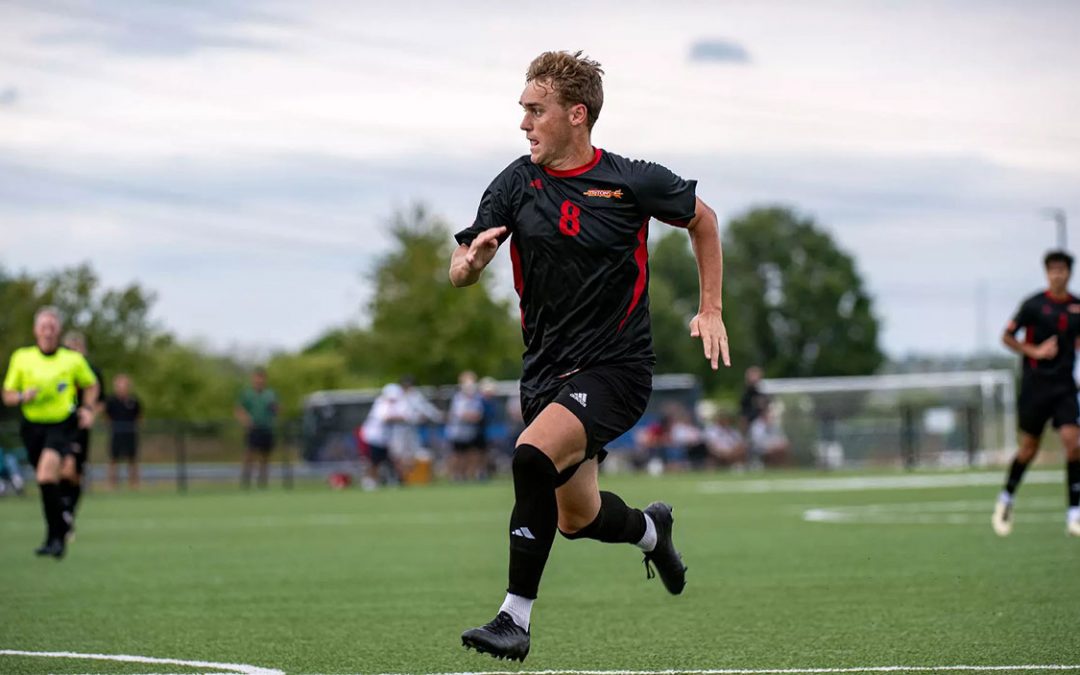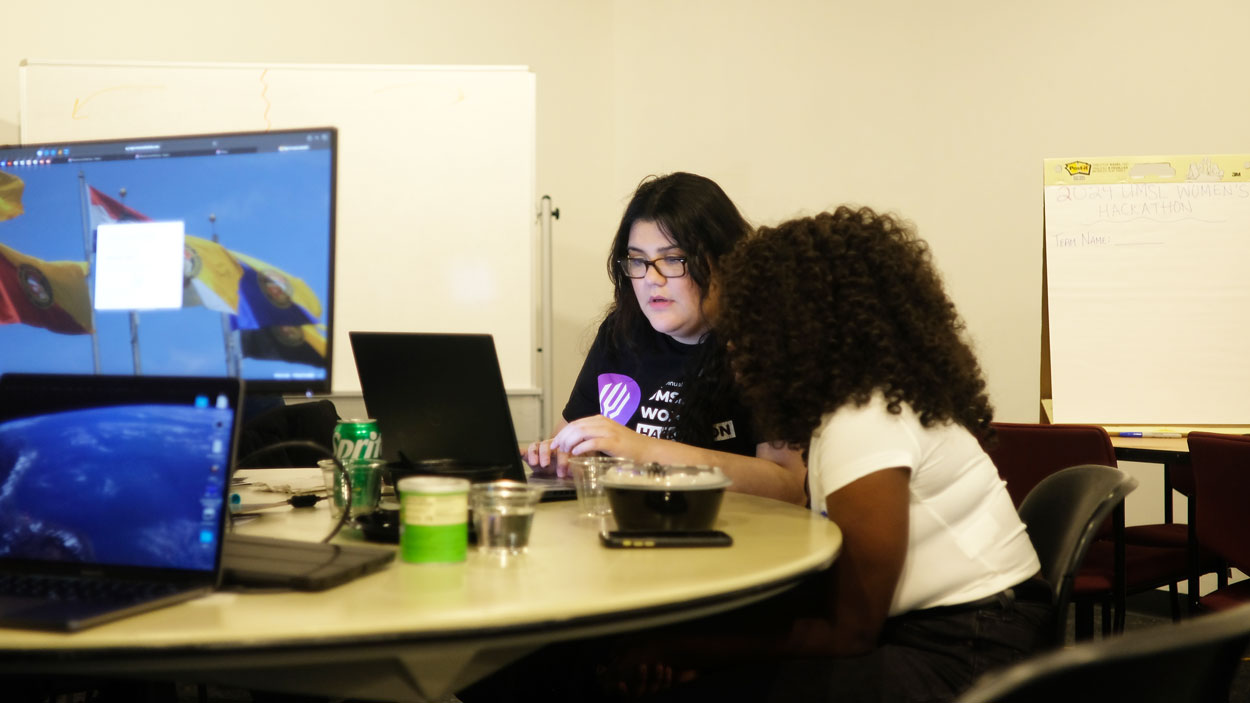
Elizabeth Treviño (left), a sophomore majoring in cybersecurity, and a teammate work on developing a safety app during the Women’s Hackathon on April 13 at the UMSL Entrepreneurship and Innovation Center. (Photo by Burk Krohe)
Pierce Burns went into the Women’s Hackathon at the University of Missouri–St. Louis on April 13 as part of the event staff. In a surprise turn of events, he quickly became a participant as well.
In his role as marketing project manager for the event, Burns was checking in on teams when a few classmates convinced him to join them.
“It was kind of spur of the moment, but it really felt like the energy around here is to get involved and test out my creativity,” he said. “I’ve never been part of a hackathon before, so it felt like a perfect experience to get introduced to that.”
But that kind of spontaneity is par for the course at the annual Women’s Hackathon. This year marked the event’s 10th anniversary at UMSL. For the past decade, it has been aimed at supporting women in technology.
“This event was created to provide that safe space for women to explore technology,” said Damon Walker, an assistant teaching professor of information systems and technology in the College of Business Administration. “This event is a coed event. But it’s a women’s hackathon first, and then we have allies that show up to participate in the event as well.”
The Department of Information Systems and Technology organized the hackathon, while Nelosys and RGA sponsored it.
UMSL faculty, staff and students, as well as community members, gathered early Saturday morning at the UMSL Entrepreneurship and Innovation Center for the all-day festivities. The day started at 8 a.m. with a networking session, and then alum Sophie Notorangelo, senior engineering manager at Stitch Fix, delivered a keynote address. Notorangelo motivated participants and also touched on issues such as career insecurities.
“It kind of set the tone for our participants,” Walker said. “We have a few participants here that have never been to a hackathon before. They were a little nervous. Sophie talked about imposter syndrome, and you could just tell the mood kind of changed from that point.”
After the keynote, participants received the day’s theme, “Secure the Future,” and an accompanying problem statement challenging participants to develop an application that empowers women while tangibly enhancing their safety and security. The problem statement structure is standard for hackathons – day- or weekend-long events where participants work collaboratively to address an issue.
“We encourage anybody that’s interested in technology in any form or fashion to participate in the Women’s Hackathon,” Walker said. “Some people have no coding experience at all, but they have ideas. So, we encourage them to share those ideas. You don’t necessarily have to have a working program. You can have a mockup of what you would imagine your program would do for you to solve that problem.”
Six teams, each with three to five members, worked for the better part of eight hours on the problem.
Elizabeth Treviño, a sophomore majoring in cybersecurity with an emphasis in computer science, was interested in the hands-on experience and the opportunity to meet new people and network.
Her team, SOSister, worked on designing an app that uses geolocation and push notifications to automatically keep users apprised of sex offenders in their area. Treviño said time was the biggest challenge, particularly because her team was working on two fronts – designing a mock app with the Figma platform and creating a PowerPoint presentation. But she felt confident going into the second half of the day.
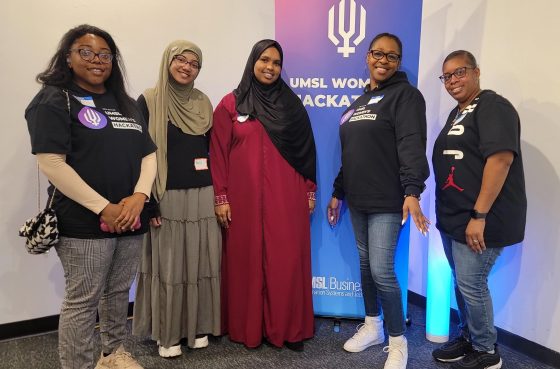
Students Briaris Sayles, Amyrah Syed, Hamida Mohamad, Shawana Piece and Tyra Jones-Williamson formed the team, #HerSafeSpace. They took home first place at the end of the all-day event.
“We’ve had a lot of positive feedback from all of the mentors coming around our table,” she said. “We’ve, as a team, completed our outline, so we know what our mission statement is. We know what our features are going to be. We know what problems we’re going to solve. We know our needs.”
Meanwhile, other teams spread throughout the EIC labored to implement their visions. The Dream Team, a trio of Walker’s students, worked to create a safety app with a panic button GPS locator that integrates with wearable technologies such as Apple Watches or Fitbits. The students decided to focus on wearable technology because a smartphone can be dropped or taken.
That evening, a panel of judges awarded prizes to the top three teams. #HerSafeSpace won first place. The team included Tyra Jones-Williamson, Hamida Mohamed, Shawana Piece, Briaris Sayles and Amyrah Syed. Red Jade took second, with team members Matt Garland, Kimathi Njoki and Rui Wei, while the Dream Team finished third, with team members Daniel Abbas, Mukhtar Chaundhry and Smith Kansara.
In addition to the chance to showcase problem-solving and critical-thinking skills, organizers and participants also saw the event as a unique professional development opportunity.
“This is my second Women’s Hackathon here at UMSL, and I will definitely be adding this to my resume,” Treviño said. “I think this is great experience. I think this is something that people look for, especially in this type of field. They really look for students who are actively trying to build these skills.”
Sarah Ortmann, an information systems and technology master’s student, and Asja Coleman, a senior majoring in information systems and technology, served as MCs for the event and were happy to be part of something making space for women in technology.
“I definitely think it’s important that these events happen not only to just include women but to put us as the focus,” Ortmann said.
Coleman concurred.
“Overall, that is very important to me as a woman in tech and a woman of color,” Coleman said. “Being a part of events like this, in general, is what keeps people like us in the field. It’s what keeps things fresh and interesting.”












